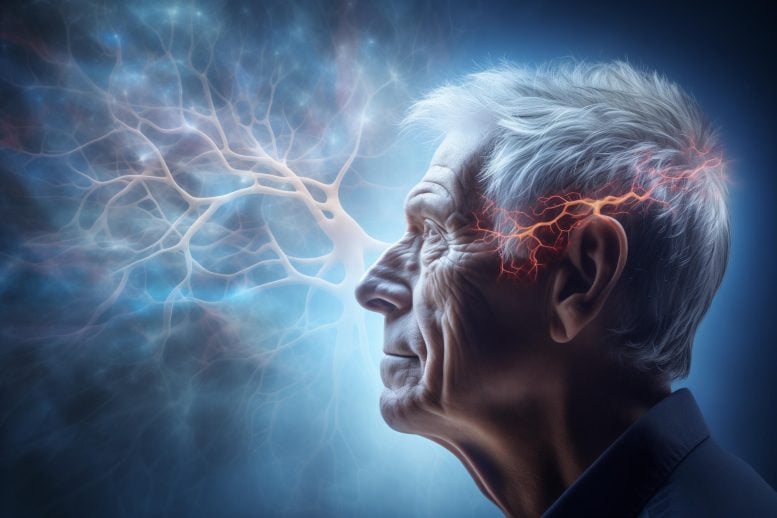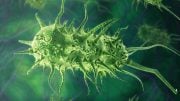
A recent study has revealed that mitochondrial DNA damage plays a crucial role in the progression of Parkinson’s disease, leading to widespread brain damage and the possibility of early diagnosis through blood tests. This discovery opens new avenues for treatment and the potential for blood-based biomarkers, with further research focused on therapeutic strategies to counteract mitochondrial dysfunctions.
A major discovery sheds light on the underlying mechanisms of Parkinson’s disease, opening the door for novel therapeutic approaches down the line.
Until recently, our understanding of Parkinson’s disease has been quite limited, manifesting in the restricted treatment options and management strategies for this debilitating condition.
Our knowledge has mostly focused on the genetic factors associated with familial cases, with the causative factors in the majority of patients remaining elusive.
However, in a new study, researchers from the University of Copenhagen have unveiled new insights into the workings of the brain in Parkinson’s patients. Leading the groundbreaking discovery is Professor Shohreh Issazadeh-Navikas.
“For the first time, we can show that mitochondria, the vital energy producers within brain cells, particularly neurons, undergo damage, leading to disruptions in mitochondrial DNA. This initiates and spreads the disease like a wildfire through the brain,” says Shohreh Issazadeh-Navikas and adds:
“Our findings establish that the spread of the damaged genetic material, the mitochondrial DNA, causes the symptoms reminiscent of Parkinson’s disease and its progression to dementia.”
Parkinson’s disease is a chronic condition that affects the central nervous system, leading to symptoms such as difficulty walking, tremors, cognitive challenges, and, eventually, dementia.
The disease afflicts over 10 million people worldwide. While there is currently no cure, certain medical treatments can offer relief from its symptoms.
Small fragments of mitochondrial DNA spreads the disease
By examining both human and mouse brains, researchers discovered that the damage to mitochondria in brain cells occurs and spreads when these cells have defects in anti-viral response genes. They sought to understand why this damage occurred and how it contributed to the disease.
Their search led to a remarkable revelation.
“Small fragments of – actually DNA – from the mitochondria are released into the cell. When these fragments of damaged DNA are misplaced, they become toxic to the cell, prompting nerve cells to expel this toxic mitochondrial DNA,” Shohreh Issazadeh-Navikas explains.
“Given the interconnected nature of brain cells, these toxic DNA fragments spread to neighboring and distant cells, similar to an uncontrolled forest fire sparked by a casual bonfire” she adds.
The dream is a blood sample
Shohreh Issazadeh-Navikas envisions that this study marks the initial stride towards a better understanding of the disease, and the development of future treatments, diagnostics, and measurement of treatment efficacy for Parkinson’s disease.
She also expressed hope that “detecting the damaged mitochondrial DNA could serve as an early biomarker for disease development”.
Biomarkers are objective indicators of specific medical conditions observed in patients. While some biomarkers are common, such as blood pressure, body temperature and body mass index, others provide insights into particular diseases, like gene mutations in cancer or level of blood sugar for diabetes. Identifying a biomarker for Parkinson’s disease holds significant promise for enhancing future treatments.
“It could be possible that the damage of the mitochondrial DNA in the brain cells leaks from the brain into the blood. That would make it possible to take a small sample of a patient’s blood as a way of diagnosing early on or to establish the favorable response to future treatments.”
Professor Issazadeh-Navikas also envisions the possibility of detection of damaged mitochondrial DNA in the bloodstream, making it feasible to diagnose the disease or gauge treatment responses through a simple blood test.
The researchers’ next endeavor involves investigating how mitochondrial DNA damage can serve as predictive markers for different disease stages and progression. “Furthermore, we are dedicated to exploring potential therapeutic strategies aimed at restoring normal mitochondrial function to rectify the mitochondrial dysfunctions implicated in the disease.”
Reference: “Mitochondrial DNA damage triggers spread of Parkinson’s disease-like pathology” by Emilie Tresse, Joana Marturia-Navarro, Wei Qi Guinevere Sew, Marina Cisquella-Serra, Elham Jaberi, Lluis Riera-Ponsati, Natasha Fauerby, Erling Hu, Oliver Kretz, Susana Aznar and Shohreh Issazadeh-Navikas, 2 October 2023, Molecular Psychiatry.
DOI: 10.1038/s41380-023-02251-4









Well, 60 minutes did a story about if Washington was made king of the United States, if the family linage were followed, who would be king today. Well they traced it down to Don Washington a truck driver. Mr Washington didn’t even know he was a direct descendant of George. Don Washington was around 6 feet tall, and had dark hair, and large dark mustach. Didn’t look like George at all, but there were 12 generations out from George.